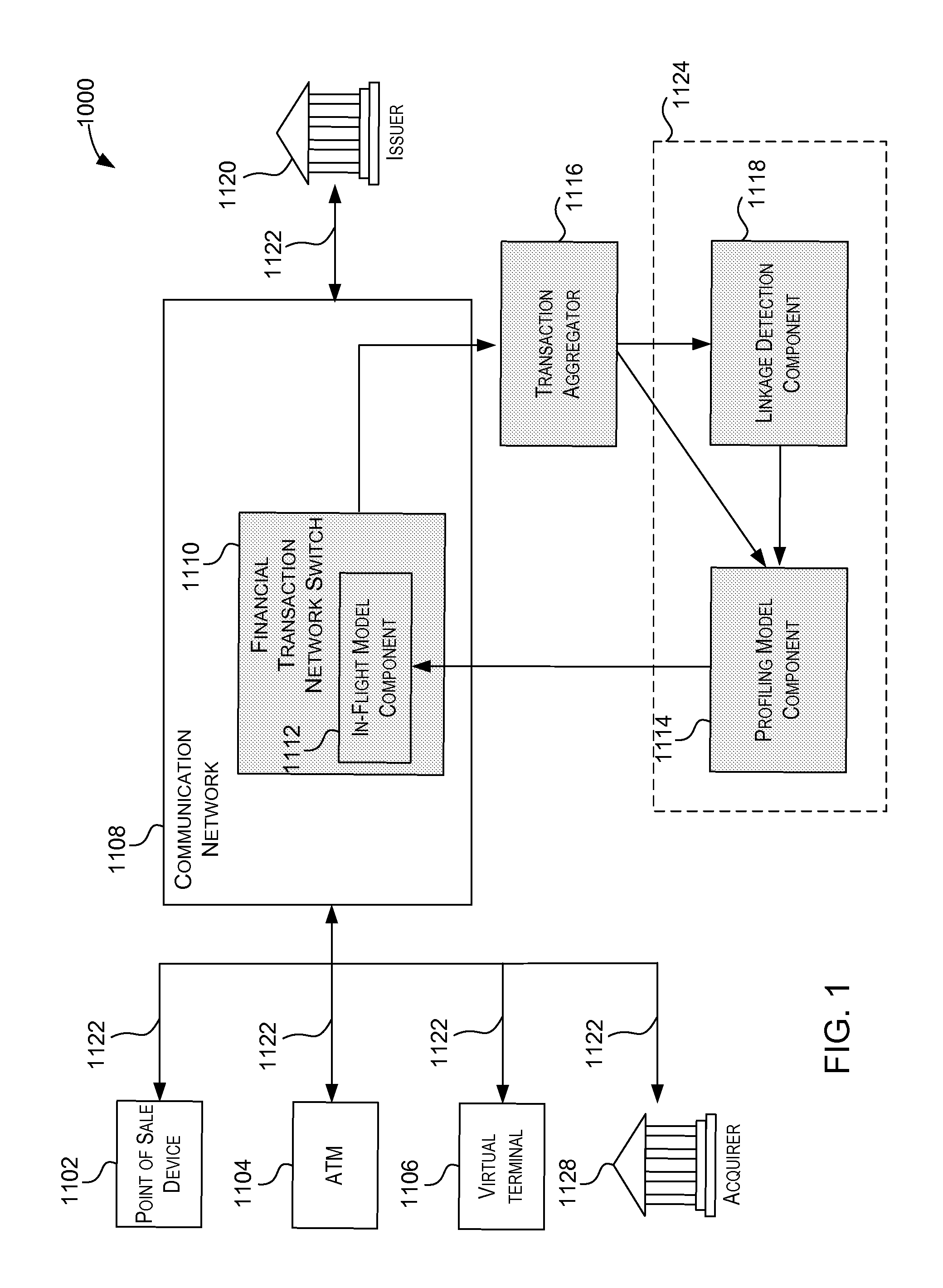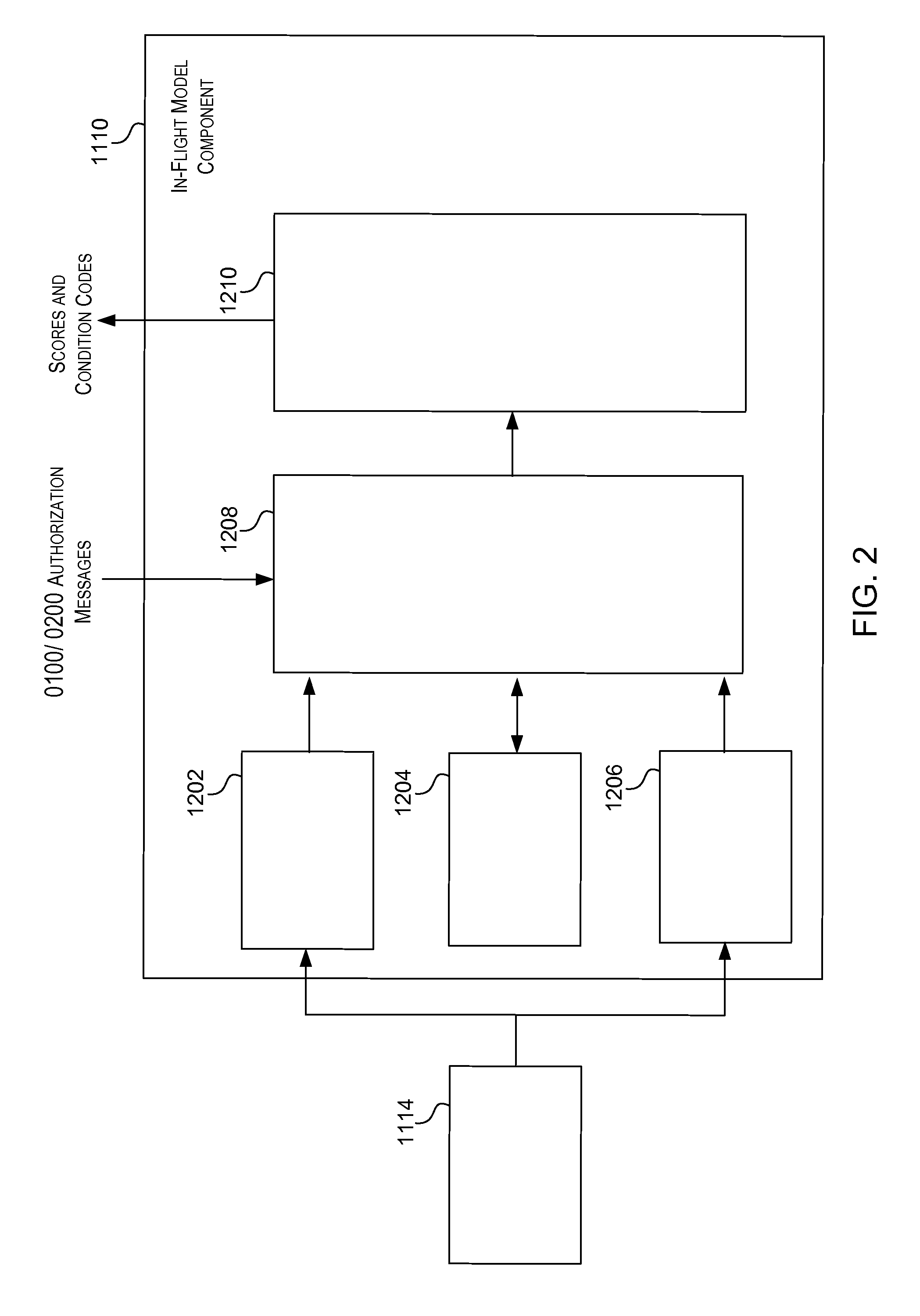Distributed Quantum Encrypted Pattern Generation And Scoring
a distributed quantum and encrypted technology, applied in the field of transaction processing and computing systems, can solve the problems of different types of risks involved in authorizing the use of a payment card, known types of risks, security risks, etc., and achieve the effect of better informed decisions
- Summary
- Abstract
- Description
- Claims
- Application Information
AI Technical Summary
Benefits of technology
Problems solved by technology
Method used
Image
Examples
Embodiment Construction
[0066]Embodiments of present invention relate to making probabilistic determinations in conjunction with a transaction processing system, such as a payment authorization system. Some of the embodiments described below are directed to mitigating various kinds of risk, such as fraud or credit risk. It should be understood that in addition to modeling risk, similar probabilistic models can also be created and used for the purposes of making other kinds of determinations. For example, the spending habits of consumers can be modeled and be used to determine the probability that a consumer would be interested in a set of coupons or would make a good candidate to be a target of a promotional offer. Embodiments of the invention are flexible enough to implement a wide variety of applications. The example embodiments given below that relate to risk modeling are not meant to be limited to risk analysis. Examples of additional embodiments that expand upon any risk models given below will also b...
PUM
 Login to View More
Login to View More Abstract
Description
Claims
Application Information
 Login to View More
Login to View More - R&D
- Intellectual Property
- Life Sciences
- Materials
- Tech Scout
- Unparalleled Data Quality
- Higher Quality Content
- 60% Fewer Hallucinations
Browse by: Latest US Patents, China's latest patents, Technical Efficacy Thesaurus, Application Domain, Technology Topic, Popular Technical Reports.
© 2025 PatSnap. All rights reserved.Legal|Privacy policy|Modern Slavery Act Transparency Statement|Sitemap|About US| Contact US: help@patsnap.com



